Min-Kai Lin
ASIAA, NCTS Physics Division
Using Bayesian Deep Learning to infer Planet Mass from Gaps in Protoplanetary Disks
Feb 23, 2022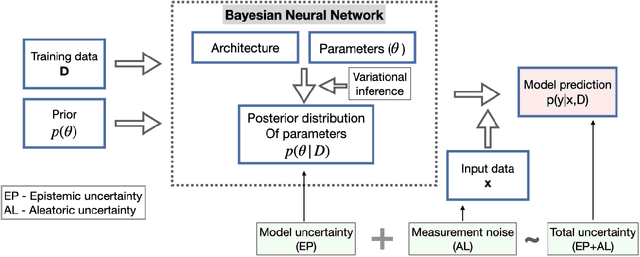
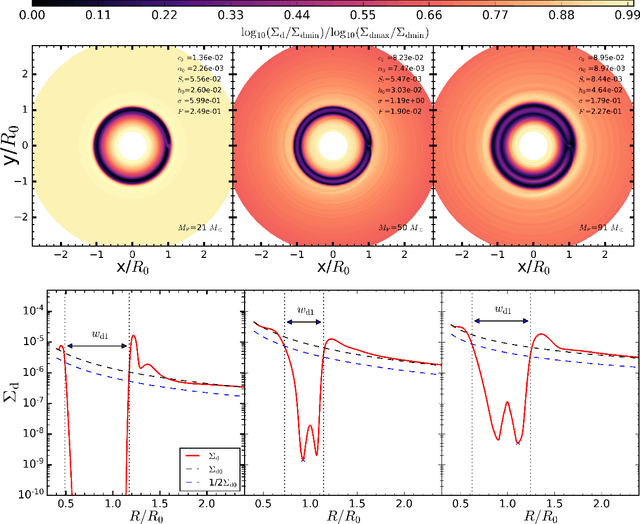
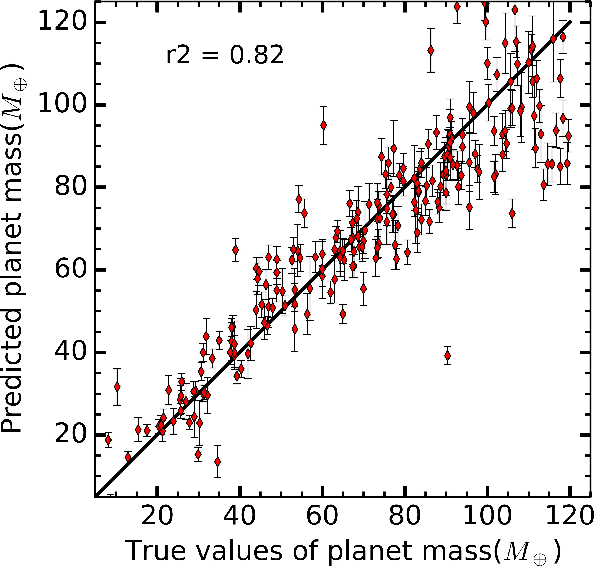

Abstract:Planet induced sub-structures, like annular gaps, observed in dust emission from protoplanetary disks provide a unique probe to characterize unseen young planets. While deep learning based model has an edge in characterizing the planet's properties over traditional methods, like customized simulations and empirical relations, it lacks in its ability to quantify the uncertainty associated with its predictions. In this paper, we introduce a Bayesian deep learning network "DPNNet-Bayesian" that can predict planet mass from disk gaps and provides uncertainties associated with the prediction. A unique feature of our approach is that it can distinguish between the uncertainty associated with the deep learning architecture and uncertainty inherent in the input data due to measurement noise. The model is trained on a data set generated from disk-planet simulations using the \textsc{fargo3d} hydrodynamics code with a newly implemented fixed grain size module and improved initial conditions. The Bayesian framework enables estimating a gauge/confidence interval over the validity of the prediction when applied to unknown observations. As a proof-of-concept, we apply DPNNet-Bayesian to dust gaps observed in HL Tau. The network predicts masses of $ 86.0 \pm 5.5 M_{\Earth} $, $ 43.8 \pm 3.3 M_{\Earth} $, and $ 92.2 \pm 5.1 M_{\Earth} $ respectively, which are comparable to other studies based on specialized simulations.
DPNNet-2.0 Part I: Finding hidden planets from simulated images of protoplanetary disk gaps
Jul 19, 2021
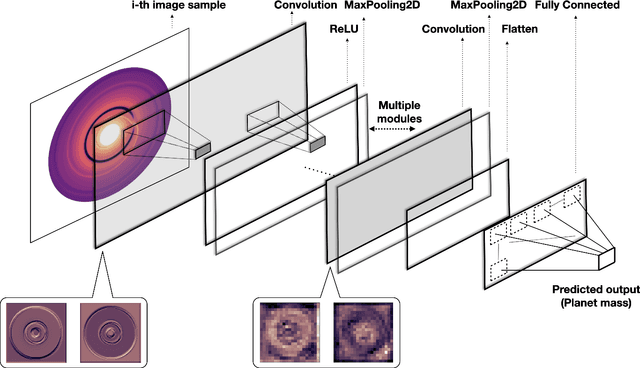
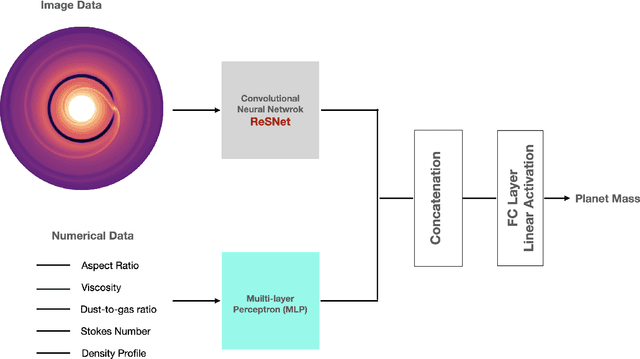

Abstract:The observed sub-structures, like annular gaps, in dust emissions from protoplanetary disk, are often interpreted as signatures of embedded planets. Fitting a model of planetary gaps to these observed features using customized simulations or empirical relations can reveal the characteristics of the hidden planets. However, customized fitting is often impractical owing to the increasing sample size and the complexity of disk-planet interaction. In this paper we introduce the architecture of DPNNet-2.0, second in the series after DPNNet \citep{aud20}, designed using a Convolutional Neural Network ( CNN, here specifically ResNet50) for predicting exoplanet masses directly from simulated images of protoplanetary disks hosting a single planet. DPNNet-2.0 additionally consists of a multi-input framework that uses both a CNN and multi-layer perceptron (a class of artificial neural network) for processing image and disk parameters simultaneously. This enables DPNNet-2.0 to be trained using images directly, with the added option of considering disk parameters (disk viscosities, disk temperatures, disk surface density profiles, dust abundances, and particle Stokes numbers) generated from disk-planet hydrodynamic simulations as inputs. This work provides the required framework and is the first step towards the use of computer vision (implementing CNN) to directly extract mass of an exoplanet from planetary gaps observed in dust-surface density maps by telescopes such as the Atacama Large (sub-)Millimeter Array.
 Add to Chrome
Add to Chrome Add to Firefox
Add to Firefox Add to Edge
Add to Edge